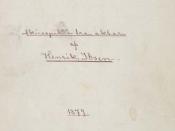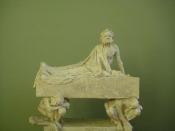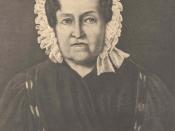Henrik Johan Ibsen was a Norwegian dramatist, whose well-constructed plays dealing realistically with psychological and social problems won him recognition as the father of modern drama. Although Ibsen's plays shocked contemporary audiences, they were championed by such serious critics as George Bernard Shaw and William Archer in England and Georg Brandes in Denmark. Ibsen's characters, the critics pointed out, were recognizable people; their problems were familiar to the audience. Ibsen's plays marked the end of the wildly romantic and artificial melodramas popular in the 19th century. His influence on 20th-century drama is immeasurable. Henrik Ibsen is renowned for not only his huge impact on theater and play writing, but also his widely used technique of symbolism in all of his work, including "A Doll's House" and "The Wild Duck."
Imagery symbolically guides the process of self-emancipation for Nora, the protagonist of A Doll's House by Henrik Ibsen. Objects like the macaroons, the lamp, the Christmas tree, and costumes represent the movement towards freedom of a woman who was a victim of society.
Ibsen painted Nora as a youthful and lovely creature who was brought through life treated as a plaything by both her father and then her husband, Torvald. She must break society's unwritten laws. Although the consequences of her actions are initially minor, they start her along the path towards crisis when she realizes her position and the injustice of it. Through Ibsen's use of symbolism, objects in the play echo her process of anguish to liberation.
Nora spent most of her life as a toy. Her father would be displeased if she had separate opinions from him. The masquerade and costumes are her own masquerade; their marriage is a decorated Christmas tree. She also pretends to be the doll, letting Torvald dress her up and tell her to...


